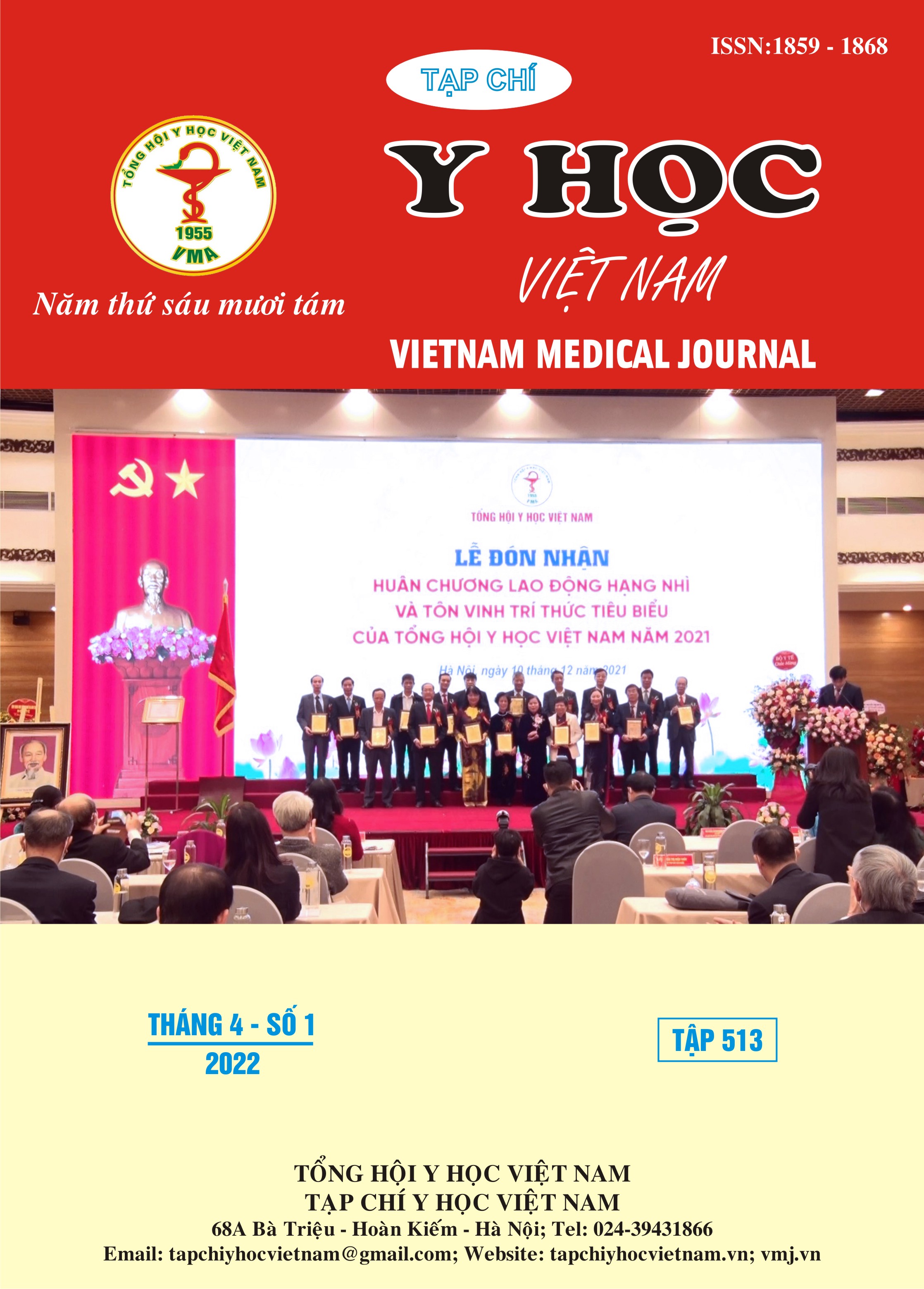CHARACTERISTICS OF 4 WEEK POST CESAREAN ISTHMOCELE AT HANOI OBSTETRICS AND GYNECOLOGY HOSPITAL
Main Article Content
Abstract
Objectives: Features of cesarean scar defect after 4 week - cesarean section at Hanoi Obstetrics and Gynecology Hospital. Methods: This prospective study included 136 patients with their first cesarean section at Hanoi Obstetrics and Gynecology Hospital from July 2020 to July 2021. Results: The prevalence of isthmocele after 4 week - cesarean section is 39,7%. Most of cases are small scar. The surgical time in the group of no isthmocele patients and isthmocele was 6.38 ± 3.5 and 10.33 ± 1.21, respectively. The prevalence of cesarean scar defect in the group of single-layer closure of the hysterotomy incision was 49.3% and the group of double-layer closure was 30.9%. Conclusion: Longer surgery time increased the risk for isthmocele. Prolonged labor duration increased the rate of isthmocele. The risk of isthmocele in the double-layer closure of the hysterotomy incision is higher than those in the sinlge-layer closure.
Article Details
Keywords
cesarean scar defect (isthmocele)
References
2. Kremer TG, Ghiorzi IB, Dibi RP. Isthmocele: an overview of diagnosis and treatment. Rev Assoc Medica Bras 1992. 2019;65(5):714-721. doi:10.1590/1806-9282.65.5.714
3. Park IY, Kim MR, Lee HN, Gen Y, Kim MJ. Risk factors for Korean women to develop an isthmocele after a cesarean section. BMC Pregnancy Childbirth. 2018;18(1):162. doi:10.1186/ s12884-018-1821-2
4. B MV, C R. Cesarean scar defect and its association with clinical symptoms, uterine position and the number of cesarean sections. Int J Reprod Contracept Obstet Gynecol. 2020;9(10):4091-4096. doi:10.18203/2320-1770.ijrcog20204293
5. Wang CB, Chiu WWC, Lee CY, Sun YL, Lin YH, Tseng CJ. Cesarean scar defect: correlation between Cesarean section number, defect size, clinical symptoms and uterine position. Ultrasound Obstet Gynecol Off J Int Soc Ultrasound Obstet Gynecol. 2009;34(1):85-89. doi:10.1002/uog.6405
6. Hayakawa H, Itakura A, Mitsui T, et al. Methods for myometrium closure and other factors impacting effects on cesarean section scars of the uterine segment detected by the ultrasonography. Acta Obstet Gynecol Scand. 2006;85(4):429-434. doi:10.1080/00016340500430436
7. Bij de Vaate AJM, Brölmann H a. M, van der Voet LF, van der Slikke JW, Veersema S, Huirne J a. F. Ultrasound evaluation of the Cesarean scar: relation between a niche and postmenstrual spotting. Ultrasound Obstet Gynecol Off J Int Soc Ultrasound Obstet Gynecol. 2011;37 (1):93-99. doi:10.1002/uog.8864
8. Roberge S, Chaillet N, Boutin A, et al. Single- versus double-layer closure of the hysterotomy incision during cesarean delivery and risk of uterine rupture. Int J Gynaecol Obstet Off Organ Int Fed Gynaecol Obstet. 2011;115(1):5-10. doi:10.1016/ j.ijgo.2011.04.013


